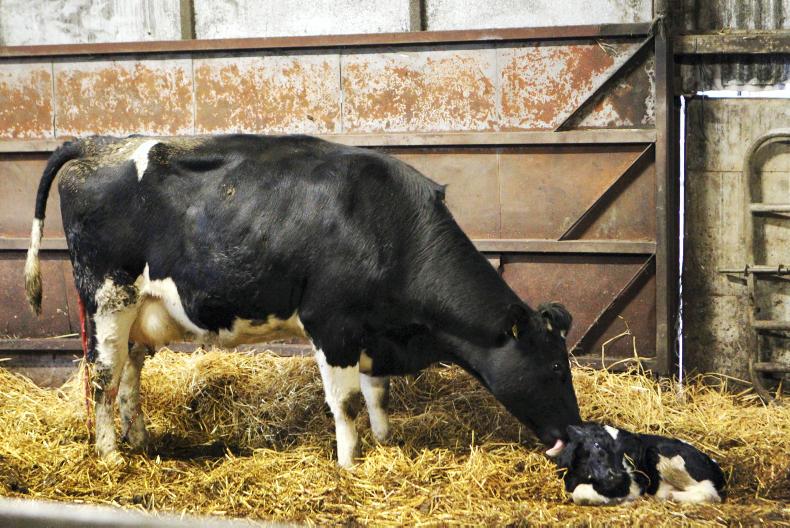Milking cows will need access to fresh water daily. If water is limited because pipes or troughs are frozen, you will need to draw water to them. Reduce their demand for water by cutting back on high dry matter feeds such as meal and dry silage.
Where snow has fallen, grazing will be next to impossible. Where animals that are out-wintered, rape or kale should not be fed frozen as it can be toxic. If there’s no thaw, silage or hay will have to be fed instead of the crop. If root crops are covered in snow, then other feeds will have to be fed.
Keeping milking parlours from freezing will be a challenge. Modern machines are good at self-draining, but problems can still occur. Keep all doors closed. Some farmers are stacking straw bales in front of openings to keep out snow and insulate from frost. Giving a final rinse of salt and water seems to work well for some. The rate is 2.5% salt, so 0.5kg in 20l of water. Put the salt water through after the final rinse. Suck enough water to line the internal surfaces and then drain the plant fully. Make sure pumps are drained at the base or well insulated to prevent impellers getting damaged.
Where there are heavy snow drifts accumulating in farmyards, be strategic about what sections to clear. Clearing and salting these sections at regular intervals will be more time-efficient than clearing a lot of snow once or twice a day.
Temporary shelter belts can be formed by stacking round bales of silage or parking trailers in front of buildings or in exposed parts of the yard to take the brunt of the drift.
All of these tasks will swallow up extra time at an already fierce busy time. On farms affected by snow and frost, milking once a day for the next few days will be a sensible option.
Read more
Cold weather management for dairy farms
Monday management: preparing for the beast
Snow and ice weather warning upgraded
How to deal with frozen pipes
Milking cows will need access to fresh water daily. If water is limited because pipes or troughs are frozen, you will need to draw water to them. Reduce their demand for water by cutting back on high dry matter feeds such as meal and dry silage.
Where snow has fallen, grazing will be next to impossible. Where animals that are out-wintered, rape or kale should not be fed frozen as it can be toxic. If there’s no thaw, silage or hay will have to be fed instead of the crop. If root crops are covered in snow, then other feeds will have to be fed.
Keeping milking parlours from freezing will be a challenge. Modern machines are good at self-draining, but problems can still occur. Keep all doors closed. Some farmers are stacking straw bales in front of openings to keep out snow and insulate from frost. Giving a final rinse of salt and water seems to work well for some. The rate is 2.5% salt, so 0.5kg in 20l of water. Put the salt water through after the final rinse. Suck enough water to line the internal surfaces and then drain the plant fully. Make sure pumps are drained at the base or well insulated to prevent impellers getting damaged.
Where there are heavy snow drifts accumulating in farmyards, be strategic about what sections to clear. Clearing and salting these sections at regular intervals will be more time-efficient than clearing a lot of snow once or twice a day.
Temporary shelter belts can be formed by stacking round bales of silage or parking trailers in front of buildings or in exposed parts of the yard to take the brunt of the drift.
All of these tasks will swallow up extra time at an already fierce busy time. On farms affected by snow and frost, milking once a day for the next few days will be a sensible option.
Read more
Cold weather management for dairy farms
Monday management: preparing for the beast
Snow and ice weather warning upgraded
How to deal with frozen pipes






 This is a subscriber-only article
This is a subscriber-only article










SHARING OPTIONS: